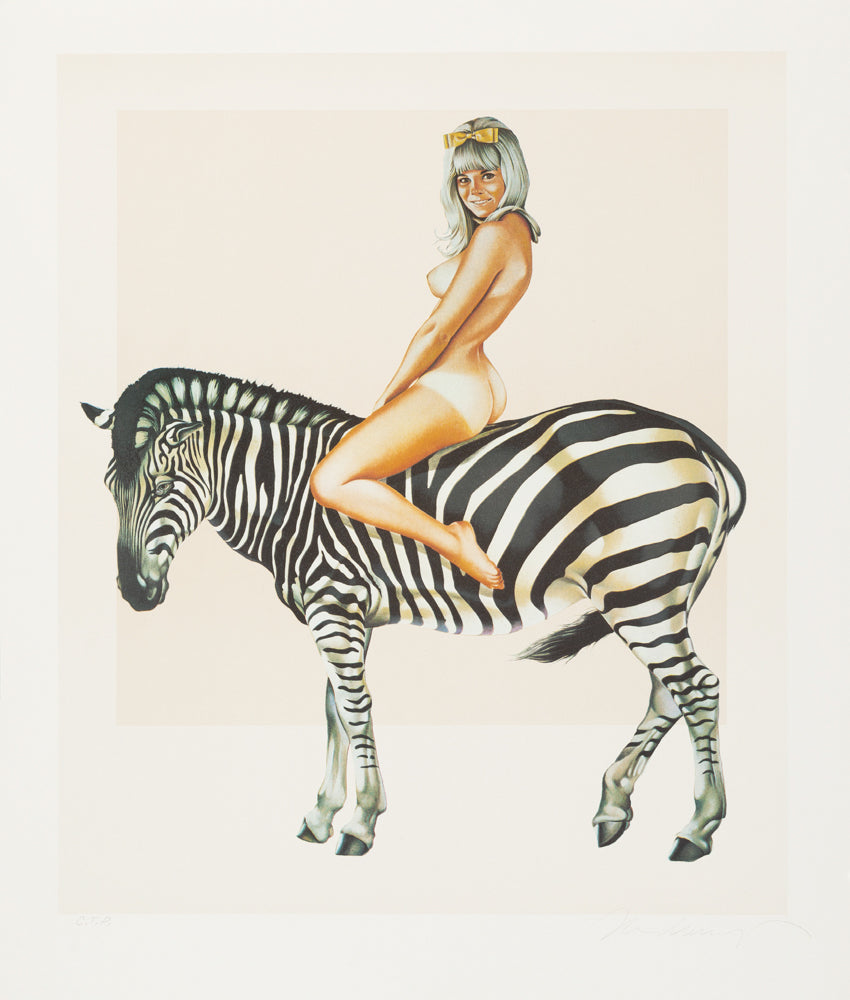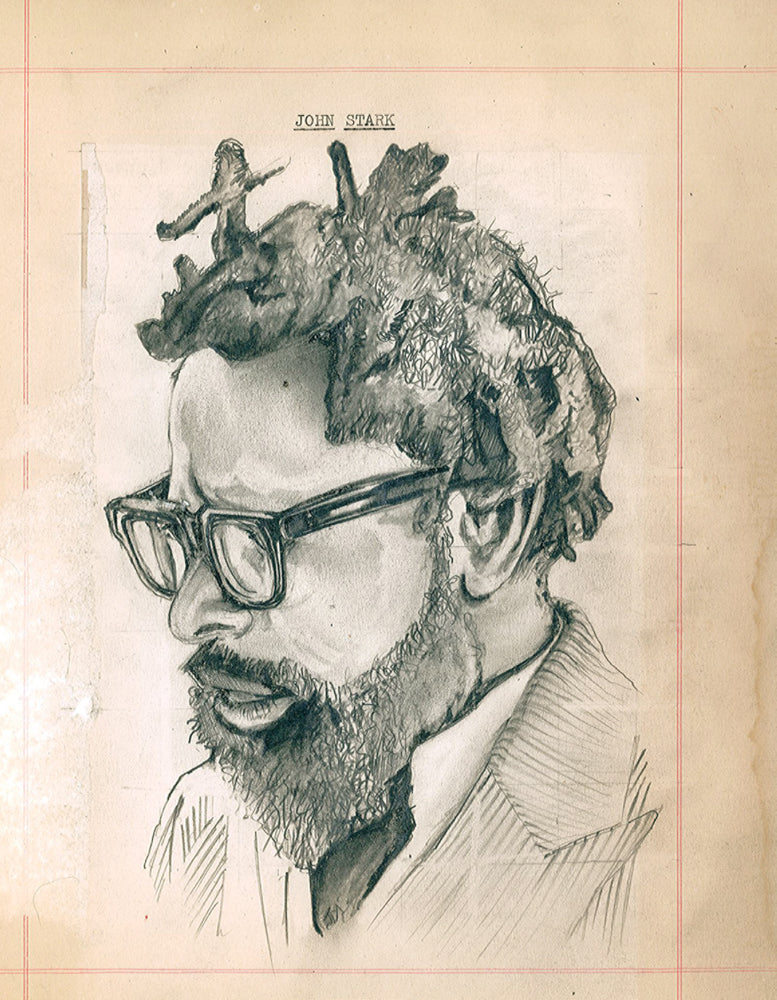
Mel’s Belles
MEL’S BELLES

THE PICASSO PINUPS LOOKS AT 80
Mel Ramos is one of the last surviving demi-gods of Pop, if an underknown one, having painted his first superhero in 1961. He was just twenty-six then, still living where he was born, in Sacramento, but he wasn’t the only painter fired up by the comics. Across the country in Manhattan, Roy Lichtenstein and Andy Warhol, two other artists of whom you’ve most certainly heard, were also on alert to the unmined riches of cheap popular culture.
Communications were such that they didn’t know each other’s work, though. New York gallerist Leo Castelli had sensed something was in the air, however — it would soon be called Pop — and had recently taken on Lichtenstein, who had also started painting ’toons in ’61. Indeed, Castelli declined to represent Warhol at first because Lichtenstein was working from such similar source material. With Lichtenstein’s flag planted firmly in the funnies, they were out of bounds for any artist with a name to make. The ever-pragmatic Warhol moved on to products and celebrities.

Mel Ramos, for his part, focused on products, too, but more particularly on glamorous women, usually nearly or completely nude. Magnificent in his single-mindedness, he has remained anchored in Northern California — now, Oakland — painting products and pinups ever since. If Cézanne had more Ramos in him, he would have stuck with the apples.
And by nude, I do mean nude. Not naked. “Naked” involves the concept of clothing that has been removed, suggesting back-story, boldness, modesty, whatever. Nudes are simply there, like apples. Also, Ramos’s women are always Beauties with a capital B rather too perfect to push the usual male buttons of arousal. His favorite word for them is “iconic.”
Iconic or not, like his good friend Allen Jones, the British artist who also made work dealing with the female form, Ramos began drawing heat from the ascendant feminist movement, then at its most robustly vocal. In the midseventies, he arrived to give a talk at the University of Missouri in Kansas City to find himself being picketed.

“I did my art historical routine — gave a talk and showed slides,” he says. “Afterwards, there were questions, and I saw this whole front row of young women who had been protesting out front. They stood up — the whole front row! — turned their backs on me, and made a speech. An elderly woman at the back got up and said, ‘For Christ’s sake, if you don’t like his work, what did you come here for?’” “I feel like we’ve outlived them,” he says of his and Jones’s early critics. “They don’t bother us anymore. Ever since Robert Mapplethorpe came on the scene, our work looks like Disneyland stuff.”
It’s ironic that the New York Popsters, primarily Warhol, of course, but also Rauschenberg, and Brit Pop-inflected artists like Gerald Laing and Eduardo Paolozzi, squeezed so much juice from Hollywood, whereas Ramos, an actual Californian, never found the famous all that interesting beyond their ability to furnish his raw materials.
“It got to the point where I was just really into doing iconic figures, and they just happened to have famous faces. I don’t want to have anybody sit there and have to figure out who they are or what they are. It’s right there in front of your face. Take it or leave it.”

Andy Warhol’s first solo show was at the Ferus Gallery in Los Angeles and included silkscreened images of Elizabeth Taylor and Elvis. His second was of the Campbell’s soup cans. Mel Ramos, though, actually pairs his women with products — a tube of Colgate, in one case; a pack of Winstons in another. In one cheeky image, a cutie-pie even emerges, Aphrodite-like, from a can of Campbell’s tomato. Eat that, Andy!
Ramos has just returned from Barcelona when we speak. He spends three months of the year there, and recently went to see a show of works by artists under forty. He found their Warholian fixation on fame surprising. “I’m not quite sure what the motivation is for that,” he says. “In my case it has to be an iconic image; it has to be the one who I consider the most beautiful woman in the world. Scarlett Johansson, for example.”
Ramos painted the actress in 2008. Did he have to ask permission? “No.” Ramos frequently makes prints. Did he make a print of Johansson? “If you do a print, you’ve got a problem. You’re no longer protected by the First Amendment,” he explains. Some years ago he found this out the hard way when he was taken to court by Teutonic nineties supermodel Claudia Schiffer. “I learned later on that it wasn’t Claudia who objected to the painting, it was her mother,” he says.

So how does he pick his models? “It’s all intuitive. I see a woman who I’d like to paint.” So is it her body language? Something in her face? “It’s absolutely in the face. That’s the nitty-gritty of it. If the face doesn’t work then the painting won’t work. I’ve been spending the morning working on a face, as a matter of fact. It’s a painting that never got finished, but somebody came into my studio and wanted to buy it, so I’m working on it now. The date of the painting will be ‘1965–2014.’”
And the gal hasn’t aged a day, right? “Nope! She’s got a great fifties hairdo.” Mel Ramos has a terrific laugh. A comic-book laugh, actually. Hohoho! “It’s called Miss Spudnut Unfinished,” he says. “She’s sitting in a donut.”


